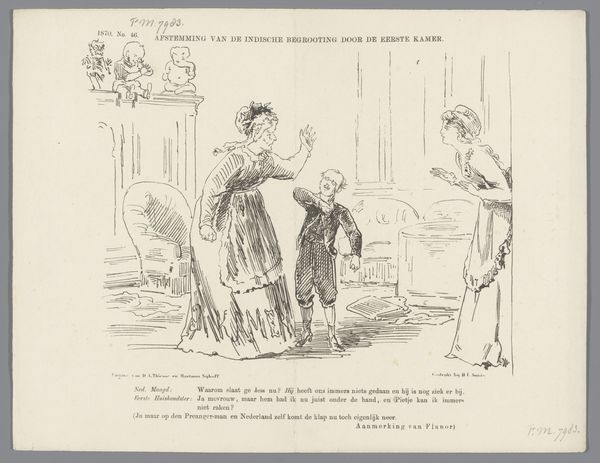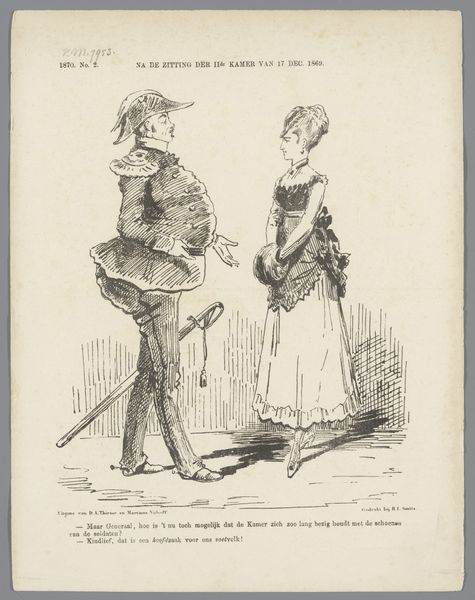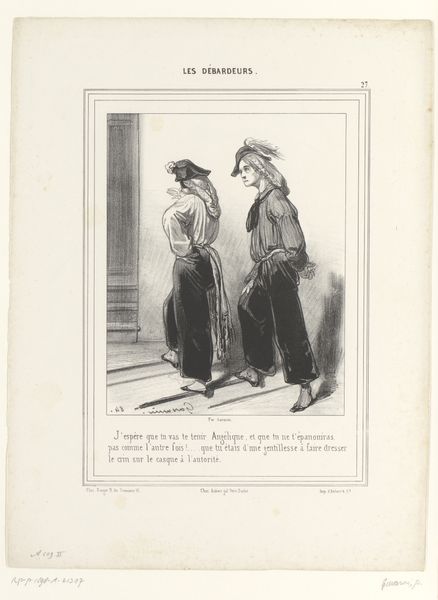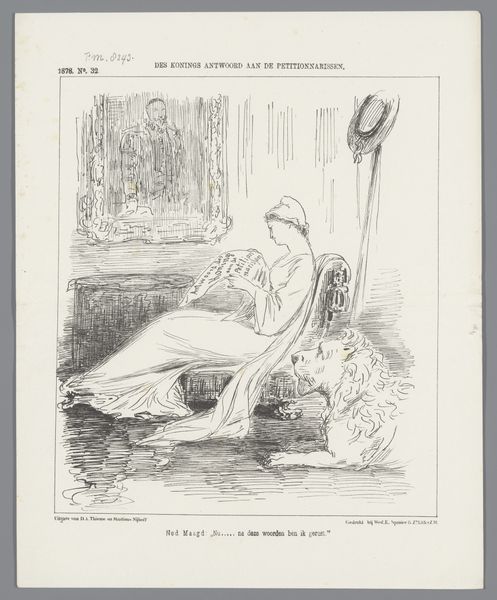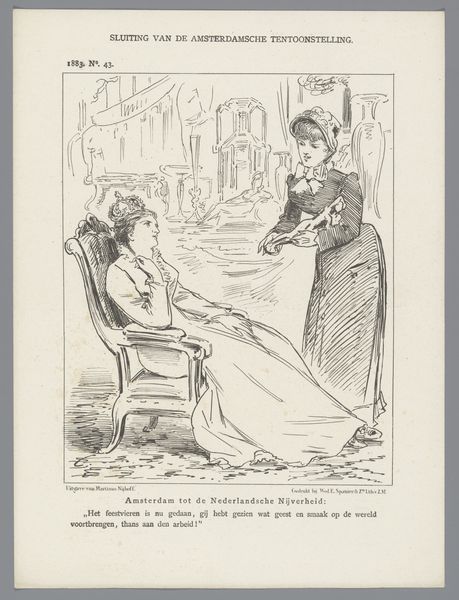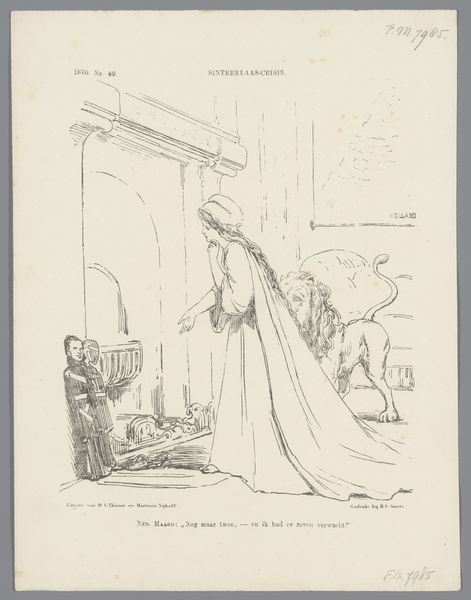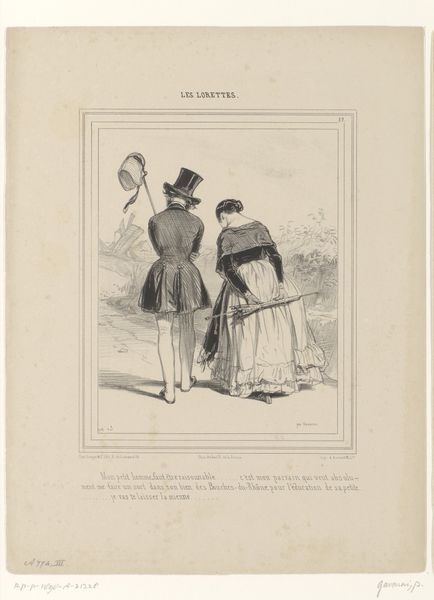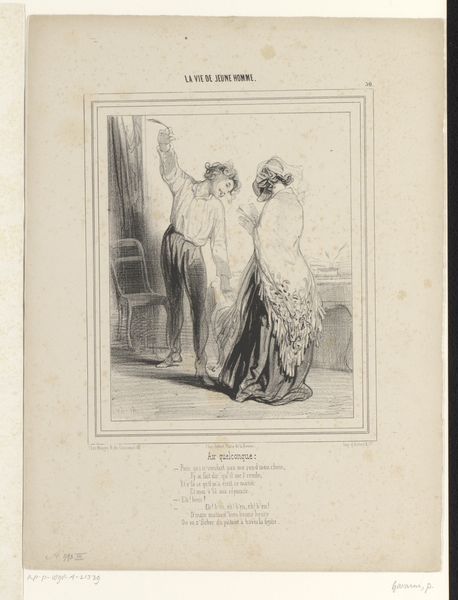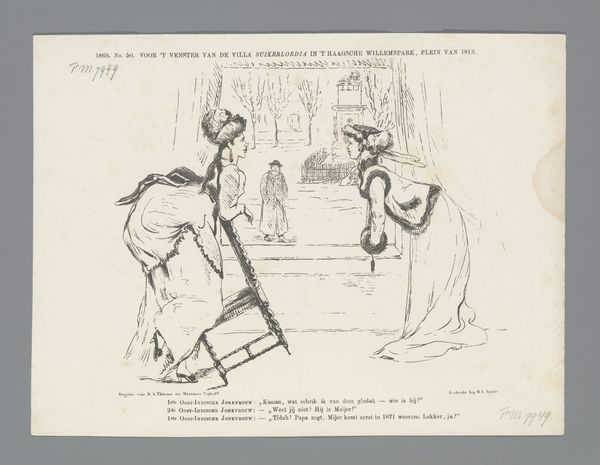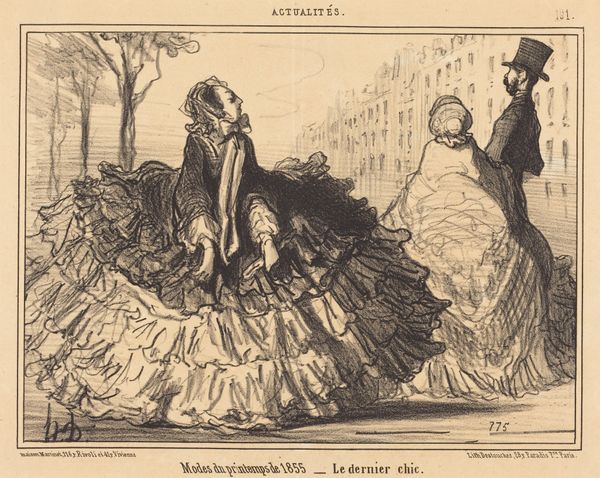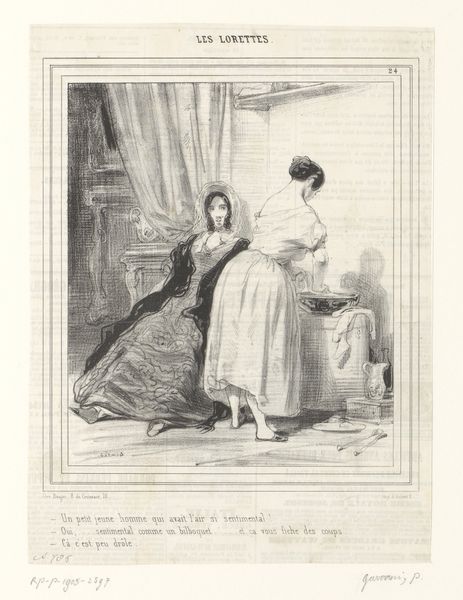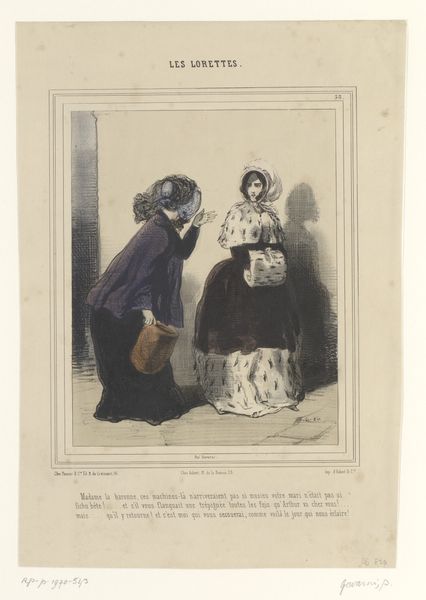
drawing, ink
#
drawing
#
caricature
#
figuration
#
social-realism
#
ink
#
cityscape
#
genre-painting
Dimensions: height 215 mm, width 275 mm
Copyright: Rijks Museum: Open Domain
Curator: Ah, this drawing, titled "Spotprent op de sociale kwestie," or "Caricature on the Social Question," dates back to 1871, attributed to Johan Michaël Schmidt Crans. It's rendered in ink, with the feel of something pulled right from a satirical journal. What strikes you about it? Editor: My first impression? I think it feels almost...anxious. All those sharp, scratchy lines create this uneasy visual texture, and that elaborate, almost comical costuming adds a layer of social commentary right away, don’t you think? It makes me feel there's a lot to unpack. Curator: Precisely. Look at how Crans employs figuration here, the caricature element. There's a tension played out with a city-scape background that firmly plants the drawing within a sense of time and social awareness, what we might call a kind of social realism. Those women—wealthy, I'd wager—looking in a shop window… what do you think it means? Editor: Well, given the title and the time, I wonder if it has something to do with their perceived ignorance towards social injustice. They seem more preoccupied with finery than, say, the plight of the working class. Those enormous bustles almost seem to mock a world elsewhere, like they take up so much space, literally. Curator: A biting critique, wouldn’t you say? I like how Crans uses ink to his advantage, playing with the contrasts. It amplifies the underlying mood, emphasizing that gap between the classes and questioning the prevailing social norms. The architectural rendering, also. Editor: Definitely, but in the formal sense, notice how he manages to use linear perspective even here—the shop front is placed perfectly into its pictorial space and uses these devices to create a window—pun intended. A genre-painting using satire. I think what's wonderful about it is how immediate its concerns remain, sadly. Curator: I agree, what this satirical scene offers speaks to its endurance and shows how effectively drawing can highlight class commentary to elicit emotional response even from us now. Editor: Ultimately, a stark and lasting look at the social landscape that still prompts vital conversation, perhaps the purpose for such works that is ever timeless.
Comments
No comments
Be the first to comment and join the conversation on the ultimate creative platform.
